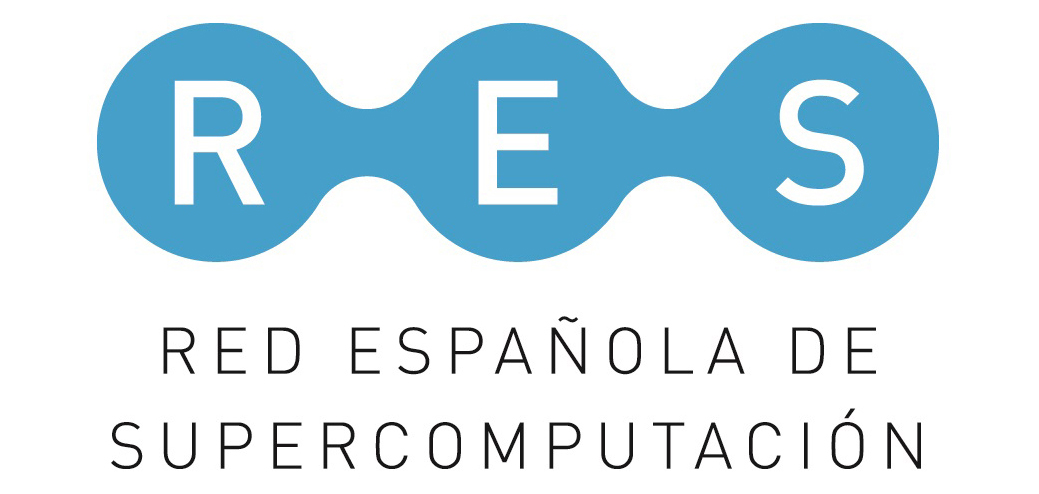Sulfur Dioxide Capture by Ionic Liquids from a molecular point of view: A Density Functional Theory Study
- Santiago Aparicio. Departamente de Química de la Universidad de Burgos.
Air pollution is attracting an increasing attention through-out the world. SO2, mainly emitted from fossil-fuel combustion, is one of the main air pollutants. Besides, SO2 is also an important and useful source for many intermediates in chemical synthesis. Thus, to develop efficient techniques to control the emissions of SO2 would have a pivotal role for the use of fossil fuels from an environmental point of view. Nowadays, the most effective methods to control SO2 emissions from fossil fuel combustion are based on flue gas desulphurization (FGD) using several technologies such as water scrubbing, metal ion solution, catalytic oxidation, activated carbon adsorption, wet lime or limestone scrubbing, double alkali process, ammonia scrubbing, NH3 gas injection, and organic solvent absorption.
However, most of these methods show several problems. For example, thus methods need a large amount of water and subsequent treatment of the resultant waste, or they produce calcium sulfate, between others. One of the most interesting techniques for the capture of a concrete compound from a mixture of gases in a gas stream is selective absorption into a liquid. In this sense, ionic liquids (ILs) have received an increasing attention in the field of acid gases (for example CO2 or SO2) capture owing to their unique properties such as negligible vapor pressures, high thermal stability, wide liquid temperature ranges, and the possibility of tailoring their properties for and specific applications through the judicious combination of suitable ions.6 So far, ILs have been demonstrated to be very useful to absorb CO2 from mixed gases or flue gases with high absorption capacity and selectivity and they can be easily regenerated (see review works by Brennecke et al. and Ramdin et al., and references therein, for an analysis of the state-of-the-art for CO2 capture using ILs). Unfortunately, researches about ILs for SO2 capture are scarcer in comparison with CO2.2,3,5,6 To design new ILs with improved / concrete features for SO2 capture, or acid gases capture, in general, we need a deeper knowledge from a molecular point of view about those factors which govern absorption process and their relationship with the molecular structure. Often, the properties of this kind of systems are due to the contribution of several complex factors, which are not completely described for the quantum chemical methods. Even if, these have been prove to be a powerful tool to obtain better insights into interactions between ILs and CO2. To our knowledge, there are few works dealing with SO2 capture from a quantum chemical perspective.
Therefore, this work is devoted to a predictive study of those properties related with interactions between ILs and SO2 from a molecular point of view through a quantum methodology, mainly Density Functional Theory (DFT) calculations (see 3.4 section). The obtained results will allow understanding the relationships between molecular structure and properties and proposing new ILs or modifications of those existing to obtain systems with improved features for SO2 capture.
This project is devoted to obtain a depeer knowledge about the SO2 capture and its relation with the molecular structure from a quantum chemistry perspective. Most of the works about acid gases capture through DFT calculations are referred to CO2 absorption, which mostly employ B3LYP functional along Pople’s basis sets (such as 6-311+G** or 6-31+G**) in gas phase.9. About SO2 capture, theoretical works are still scarce, and most also use B3LYP functional.6, When the acid gas capture occurs through a physical sorption process (physisorption), we could classify the interaction in our system into two groups: i) ionic interactions between cation and anion forming the IL; and ii) Dispersion interaction between acid gas and ILs. Due to the nature of these interactions, the first step in the study of SO2 capture from a DFT perspective should have been to analyze the effect of the employed functional about SO2 capture related properties, such us geometries and interactions energies (between ionic pairs of the IL and absorbate and the gas and the IL). This study will allow us obtain information, between others, about the effect of the employed functional (pure, hybrid, meta-GGA, % Hartree-Fock, HF, contribution) about the calculated properties. For such purpose, the first step in this study is to choose a set of several functionals, such as: pure functional (PBE, BLYP), hybrid and meta-GGA functional with different % HF (B3LYP: 20%, PBE0: 25% and M06: 27%, M06-2X: 54%, M06-HF: 100%), range separated hybrid functional with an asymptotically %HF (LC-PBE, CAM-B3LYP, ωB97X). Due to the possible dispersion interactions between the gas and the ionic liquids, we will also use dispersion corrected functionals according the semiempirical model proposed by Grimme: PBE-D, PBE0-D, B3LYP-D, ωB97XD, which use Grimme’s D2 dispersion model.
Finally, pure HF and MP2 calculations will also carried out. The Pople’s 6-31+G** and 6-311+G** basis sets have been selected. Thus, we can also test the effect of the basis sets. Due to the high computational cost, MP2 would be done over B3LYP geometries, and obtained MP2/6-311+G** energies will be considered as reference energies. From this systematic work, we should be also able to select a suitable functional based on calculated properties and computational cost. For this purpose a set of common alkyl-imidazolium cation based ILs amply used to capture acid gases have been selected. Although this project is devoted to SO2 capture, this kind of study is also required for CO2 capture. For our calculations, our model is constituted by the anion and the cation corresponding to the IL and the absorbed molecule. At the beginning all calculation will be done in gas phase. Actually, sulfonated gases from fossil-fuel combustion are mixture of several gases besides SO2, such as CH4, H2, or N2. In this sense, obtain information about the selectivity of the ILs is also important. Therefore, the next step in our work is considered a molecule of another gas (CH4, H2, or N2) along and without SO2 to obtain information about the selectivity of a concrete ILs from a molecular point of view. So far, all proposed computational works would be due in gas-phase. However, once know the dielectric constant of a given IL (obtained from experimental measures or Molecular Dynamics Simulations carried out in our laboratory), we could also study the SO2 capture in a most realistic liquid environment through continuum solvation model (CPCM).
- S. Aparicio, M. Atilhan. Molecular Dynamics Study of Carbon Nanostructures in N‑Methylpiperazinium Lactate Ionic Liquid. J. Phys. Chem. C 2013, 117, 22046.
- S. Aparicio, M. Atilhan. On the Properties of CO2 and Flue Gas at the Piperazinium-Based Ionic Liquids Interface: A Molecular Dynamics Study. J. Phys. Chem. C, 2013, 117, 15061.
- F. Karadas, B. Köz, j. Jacquemin, E. Deniz, D. Rooney, J. Thompson, C. T. Yavuz, M. Khraisheh, S. Aparicio, M. Atilhan. High Pressure CO2 Absorption Studies on Imidazolium-Based Ionic Liquids: Experimental and Simulation Approaches. Fluid Phase Equilibr., 2013, 351, 74.
- J. Y. Jung, F. Karadas, S. Zulfiqar, E. Deniz, S. Aparicio, M. Atilhan, C. T. Yavuz, S. M. Han. Limitations and High Pressure Behavior of MOF-5 for CO2 Capture. Phys. Chem. Chem. Phys. 2013, 15, 13319.
- S. Aparicio, M. Atilhan. A Computational Study on Choline Benzoate and Choline Salicylate Ionic Liquids in the Pure State after CO2 Adsorption. J. Phys. Chem. B, 2012, 116, 9171.


